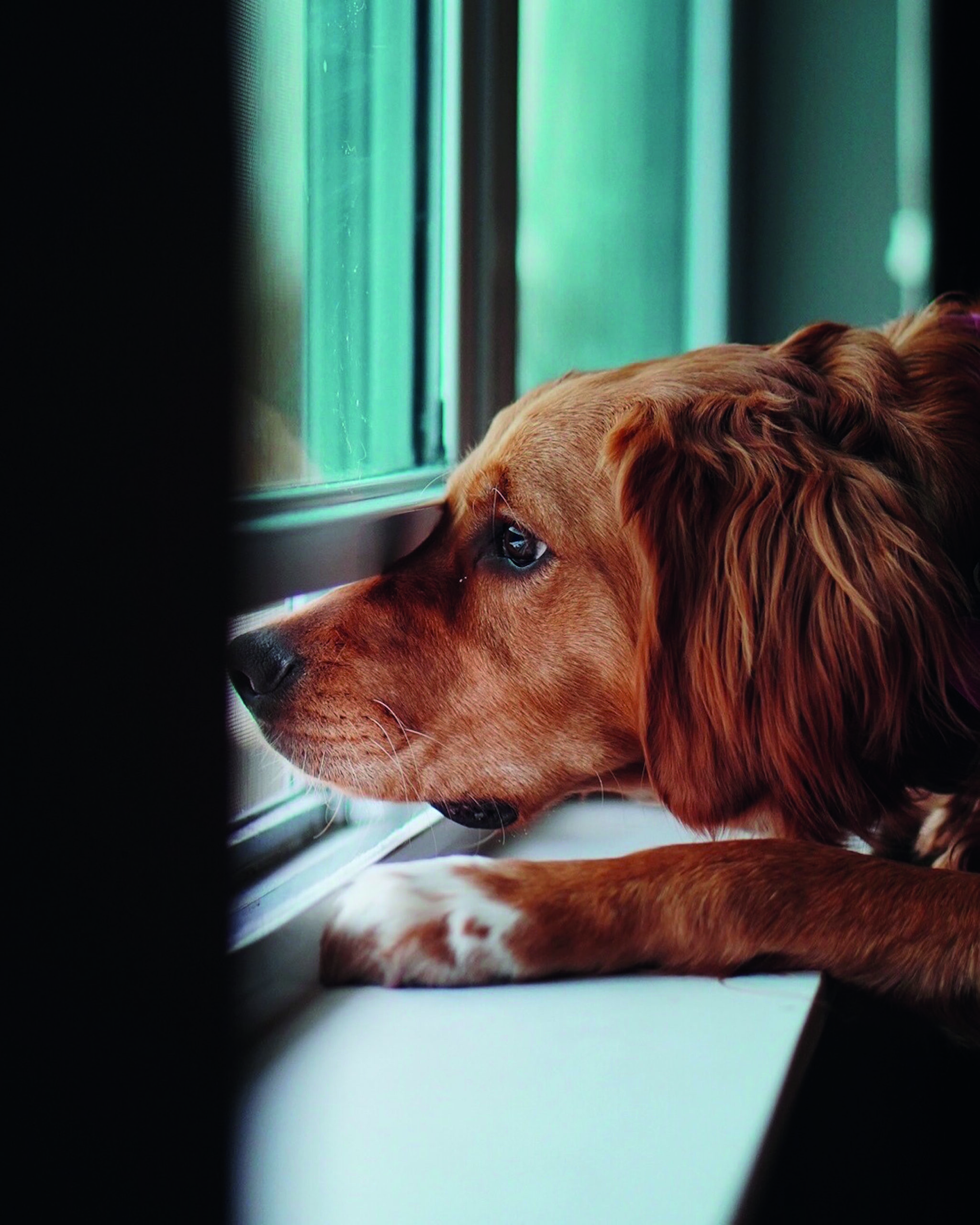 Since the end of lockdown we are seeing a rise in owners reporting that their pets are more clingy. For this article I will focus on dogs and separation but would ask cat and even parrot owners to be mindful that their pet may also have become used to having you around all the time and may have to be eased into coping with separation as more usual work patterns resume. For the last three months your dog has been by your side practically every minute of the day, but what is going to happen when life gets back to normal and you go back to work or even just go shopping?
Since the end of lockdown we are seeing a rise in owners reporting that their pets are more clingy. For this article I will focus on dogs and separation but would ask cat and even parrot owners to be mindful that their pet may also have become used to having you around all the time and may have to be eased into coping with separation as more usual work patterns resume. For the last three months your dog has been by your side practically every minute of the day, but what is going to happen when life gets back to normal and you go back to work or even just go shopping?
Is it separation anxiety?
- Setup a filming device using an app like Zoom, with a wide picture of where you leave your dog.
- Leave the house for half an hour and watch what your dog does. If your dog soon goes to her resting area and settles and snoozes you can assume all is well.
- However, if you notice subtle or more obvious signs of anxiety take action. Red flags include, pacing, barking, whining, howling, toileting, salivating, destroying things, looking generally distressed.
Changes in Behaviour
- Sudden changes in behaviour can be an indication that something is awry.
- First see your vet to exclude medical issues.
- If your dog gets the medical all clear consider whether your pet is bored and frustrated. Lockdown has meant some dogs have not has as much mental stimulation as before.
- Get some puzzle toys, teach ‘find it’, do some training and when you are out leave appropriate things to do – a cardboard box stuffed with paper and treats to rip up or hide food around the home to be searched out.
What next?
You have done all of the above but your dog gets distressed when you leave.
First, do not stop being affectionate with your dog, stop talking to her, playing with her, snuggling up on the sofa or your bed, if this has been the norm. There is no evidence this causes separation issues. However, clingy behaviour may be a by-product of lockdown as your dog is now more used to you being around.
- Start teaching your dog to be alone again in very, very tiny steps – just a few seconds at a time.
- Go into another room and close the door.
- Keep the absence short at first – use your camera/device to watch your dog and build up the time they are alone, slowly.
- If your dog is relaxed behind a closed door inside the house then the next step is to leave the house.
- Make a note of how long you were out before the dog gets slightly worried and use that as your baseline for next time.
- Increase the time you are out gradually and chop and change durations – try not to increase time in a straight line.
- For dogs that are relaxed for short absences when you are out, go out for half an hour and build from there.
- Watch and listen to your dog. Work at their pace. Trying to force them to ‘get over it’ will likely make them worse.
Get Help
If your dog is not doing well alone you need professional help. Go to www.abtcouncil.org.uk. Some behaviourists specialise in separation issues.
Leonie St Clair|www.londondogstraining.co.uk

